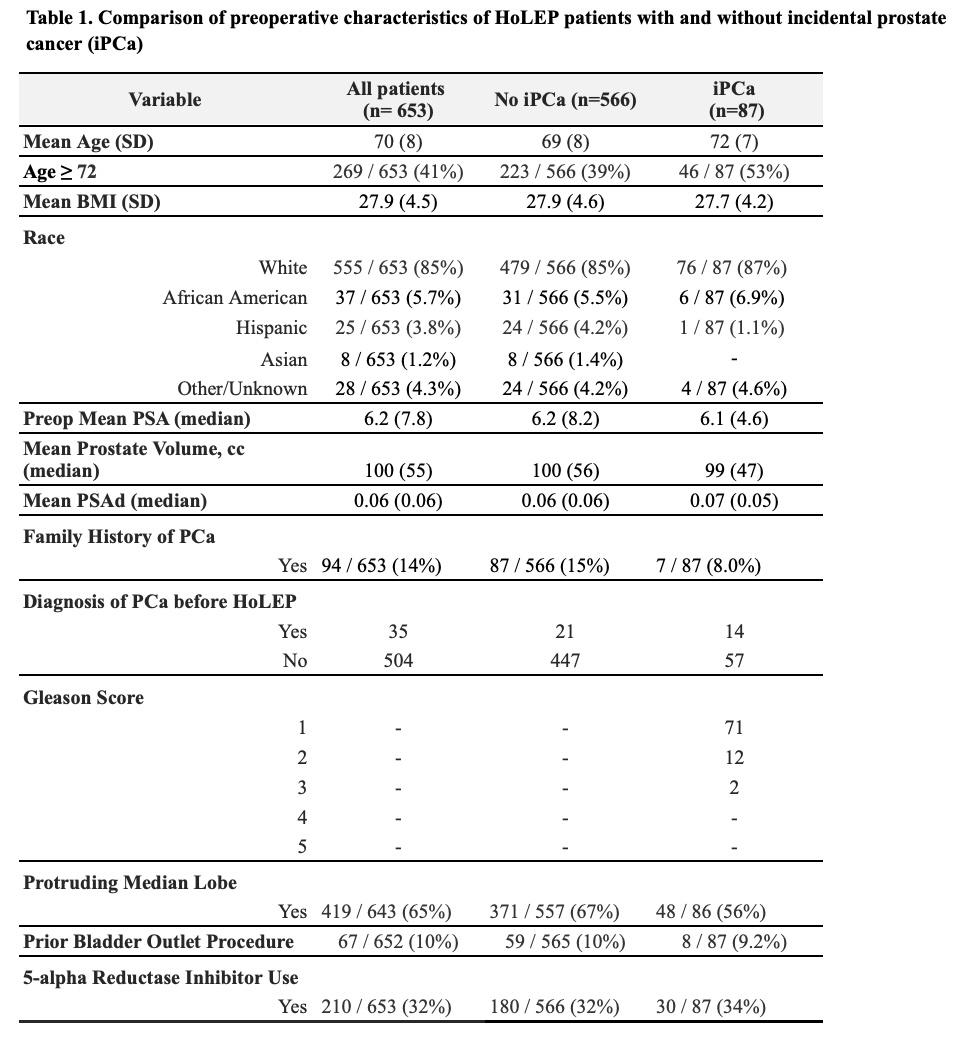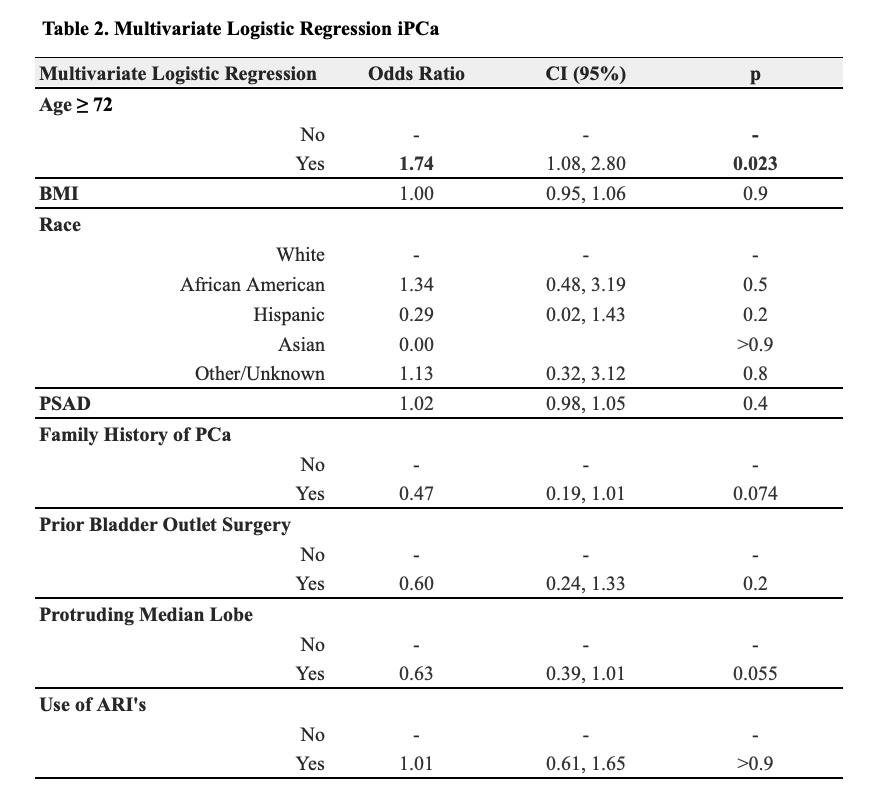Back to 2025 Abstracts
Clinical Predictors of Incidental Prostate Cancer at the Time of Holmium Laser Enucleation of the Prostate
Jeffrey Carbonella, MD1, Gabriela M. Diaz, MD
1, Julien DuBois, BS
1, Nishan Sohoni, MS
1, Aleksandra M. Golos, BS
1, Xiangyi Xi, PhD, MS
2, Daniel Kellner, MD
1.
1Yale School of Medicine, New Haven, CT, USA,
2Yale Center for Analytical Sciences, New Haven, CT, USA.
BACKGROUND: The objectives of this study are to determine the prevalence of incidental Prostate Cancer (iPCa) among patients who underwent HoLEP procedure and to identify clinical predictors associated with iPCa detection.
METHODS: We conducted a retrospective review on a cohort of 951 patients who underwent HoLEP at our institution from 2019 to 2023. Patients without a baseline PSAD level (n=298) were excluded. Preoperative variables included age, BMI, race, PSA, prostate volume, PSAD, family history of PCa, prior diagnosis of PCa, presence of a protruding median lobe and use of 5-alpha-reductase inhibitors. Age was categorized based on the median age (≤71 years and ≥72 years) to assess whether an optimal age cutoff could be determined. Multivariate logistic regression analysis was performed to evaluate the association between preoperative variables and iPCa.
RESULTS: A total of 653 patients who underwent a HoLEP were included in our study. Among these, 13.32% (87/653) were diagnosed with iPCa. Of those, 82% (71/87) had Gleason Grade Group (GGG) 1, 14% (12/87) had GGG2 and 2.3% (2/87) had GGG3 disease. Multivariate analysis revealed a significant association between age (OR=1.04, p=0.010) and iPCa. In the final adjusted model, patients ≥72 had 74% higher odds of iPCa compared to those ≤71. No associations between other covariates and iPCa were found (all p>0.05).
CONCLUSIONS:We found that iPCa was detected in 13.32% of patients undergoing HoLEP, with age being a significant predictor of iPCa. Further research is needed to determine its clinical significance and implications for patient management.


Back to 2025 Abstracts

